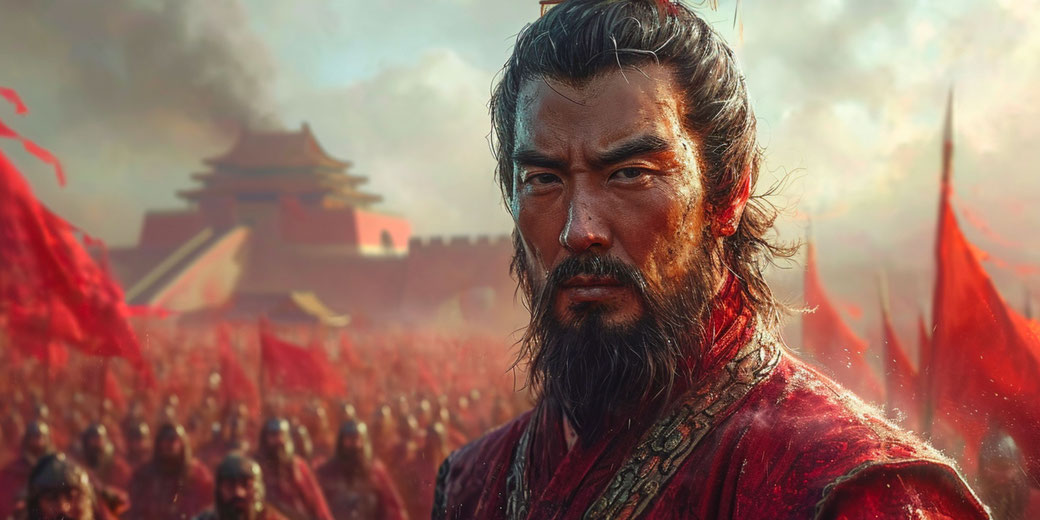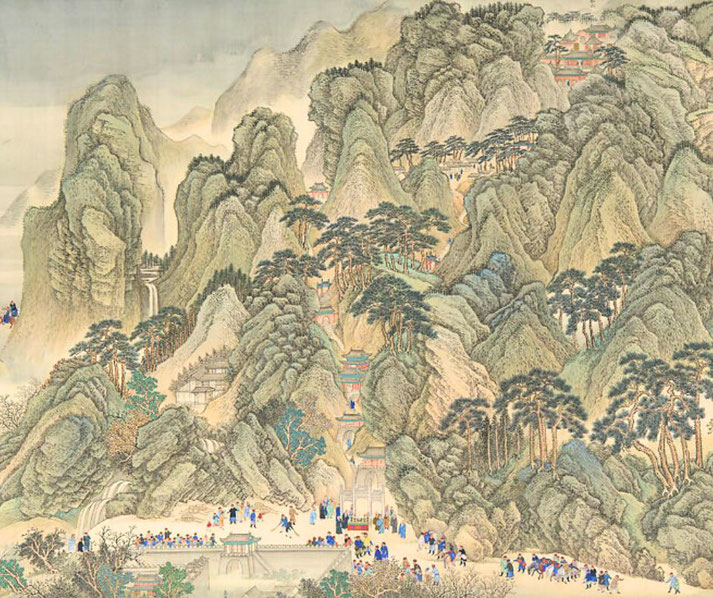Ancient China's game of thrones: The turbulent Warring States period

The Warring States in ancient Chinese history was a particularly violent and chaotic period that lasted from 475 BC to 221 BC.
Different kingdoms competed for the right to rule over the others and define the future of China.
Who was fighting during the Warring States period?
The seven main states that dominated this period were the Qin, Chu, Zhao, Wei, Han, Yan, and Qi.
Towards the end of the last dyansty, known as the Zhou, a these states began to act independently from the ruling family.
As a result, the Zhou Dynasty quickly weakened, as it could no longer call up the armies of these regions to defend itself.
As it became clear to the competing states that one of them had the potential to take charge, they began focusing on developing their government, and to seek out military advantages through alliances with some of the others.
For example, the Qin followed their military leaders, Duke Xiao and his adviser Shang Yang, and later King Zheng.
Similarly, in the east, King Wei took charge of the Qi, while in the south, Chu followed King Zhuang.
Early on, however, it was the Zhao who appeared to have a much stronger military under experienced commanders like King Wuling.
However, the alliances and agreements between these factions meant that the balance of power changed constantly, which makes the Warring States Period one of the most unpredictable, yet interesting, stages of Chinese history.

How the states prepared for war
By this point, there had been vast improvement in the iron weapons, such as swords, spears and armour, which had taken the place of traditional bronze ones.
The new metal meant that they were much deadlier in battle.
At the same time, cavalry units had also become a more powerful element of the Chinese forces.
In particular, the State of Zhao, which was led by King Wuling, boasted a formidable cavalry force, which they had learnt from the nomadic tribes to the north.
This gave them more speed and tactical options on the battlefield.
This was also the time that the poweful crossbow appeared for the first time. This ranged weapon offered more reach and could pierce armour more easily than older bows.
As a reuslt, armies that used large numbers of crossbowmen, such as Qin, gained a clear advantage.
At the same time, infantry groups also grew larger and followed more advanced formations than before.
The famous military book known as The Art of War, which was written by Sun Tzu, was put together around this time.
It provided a detailed analysis of military strategy, how to spy on your enemies, and the essential mental preparations for leaders under pressure.
In fact, this book was so instrumental, it would go on to dictate how armies fought in other places other than in China as well.

The key events of the Warring States Period
Conflict started in 403 BCE, when the Zhou court officially recognised Han, Wei and Zhao as independent states.
As a result, these states began to use their military and diplomatic power to grow their secure more resources.
Also, many of them undertook reform efforts. This is best seen when, in Qin between about 360 BCE and 338 BCE, Duke Xiao and his adviser Shang Yang put in place a legal code that rewarded anyone in their lands who was a gifted military commander, or who had invested in increasing their wealth through land cultivation.
Meanwhile, in Qi, King Wei reorganised government offices and encouraged trade, which increased Qi’s wealth and, in turn, allowed it to raise larger armies.
The first major event occurred in 342 BCE, at the Battle of Maling, when Qi forces outmanoeuvred Wei and reduce Wei’s ability to challenge its neighbours.
Then, in 334 BCE, Chu took over the state of Yue. This gave it coastal ports and skilled sailors.
By 316 BCE, Qin forces had moved into the regions of Shu and Ba in modern Sichuanto try and seize their fertile lands.
Notably, the most devastating clash occurred at Changping in 260 BCE, when Qin defeated Zhao and reportedly killed more than 400,000 captured soldiers.
It shattered Zhao’s strength and significantly grew Qin’s military power.
Changes in Chinese society
While China was consumed by war at this time, there were other changes taking place in a more peaceful way.
Most notably, new ideas and schools of thought appeared, which is often called the Hundred Schools of Thought.
The most significant was the rise of Confucianism, started by Confucius (551–479 BC).
It focused on honest behaviour and championed the value of learning, particularly about morals, proper behaviour and kind leadership.
This movement was so popular that it started to influence Chinese politics.
The other key development was the arrival of Taoism, which had been founded by a figure know as Laozi.
He wrote his philosophy in a book called the Tao Te Ching, in which he talks about living in balance with the Tao, or ‘the Way’.
It specifically encouraged people to live a simple life, which included living close to nature and avoiding interference with natural processes.
Taoism offered a contrasting, more spiritual, worldview to the more socially-oriented Confucianism.
This period also saw the first signs of what would be called Legalism, particularly in the state of Qin, which advocated for a system of strict laws and government control. This is best seen in the works of Han Feizi and Li Si.
It would actually play a crucial role in Qin's unification of China, as it provided important ideas for how to centralise the emperor’s power and enforce controls over the common people.

How the Warring States period ended
Following the overwhelming victory at the Battle of Changping in 260 BCE, the Qin became the most powerful of the different states.
The pivotal moment in Qin’s rise came under the rule of King Zheng, who became king in 246 BC at the age of 13.
Under his leadership, and with the guidance of skilled advisors like Li Si, the Qin embarked on a series of military campaigns between 230 BCE and 221 BCE that brought all the remaining states under its control.
First, Han fell in 230 BCE with little resistance. Next, Zhao surrendered in 228 BCE after several sustained sieges.
In 225 BCE, Qin engineers diverted a river to flood Wei’s capital, which led to its surrender.
Then, Chu’s defeat followed in 223 BCE. Finally, Yan and Qi submitted by 222 BCE.
Finally, in 221 BCE, King Zheng of Qin declared himself Qin Shi Huang, which means the ‘First Emperor’, which officially ended the Warring States Period and started the Qin dynasty.
Once in power, the emperor implemented a series of sweeping reforms over all of the territories he now ruled.
He standardised the writing system, currency, weights, and measures, and built an extensive network of roads and canals to unify and strengthen the empire.
Shi Huang would also start the project that we now call the Great Wall of China.
In fact, the framework for the imperial system that the First Emperor created, would go on to dominate China for the next two millennia.

The unification under the Qin Dynasty, though short-lived, had a profound impact on Chinese history.
It established the framework for the imperial system that would dominate China for the next two millennia.
The administrative and bureaucratic reforms implemented during this time laid the foundation for the centralized state governance that characterized subsequent dynasties.
What do you need help with?
Download ready-to-use digital learning resources
Copyright © History Skills 2014-2025.
Contact via email
With the exception of links to external sites, some historical sources and extracts from specific publications, all content on this website is copyrighted by History Skills. This content may not be copied, republished or redistributed without written permission from the website creator. Please use the Contact page to obtain relevant permission.





